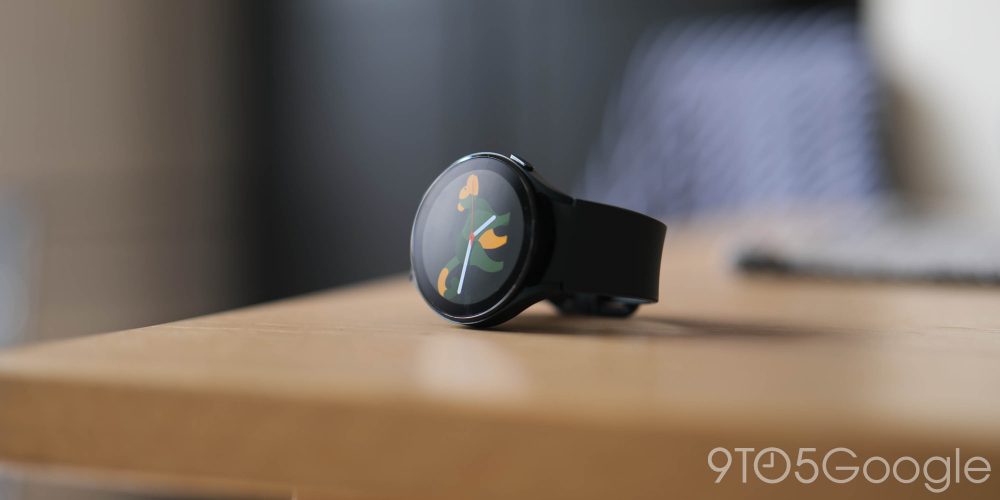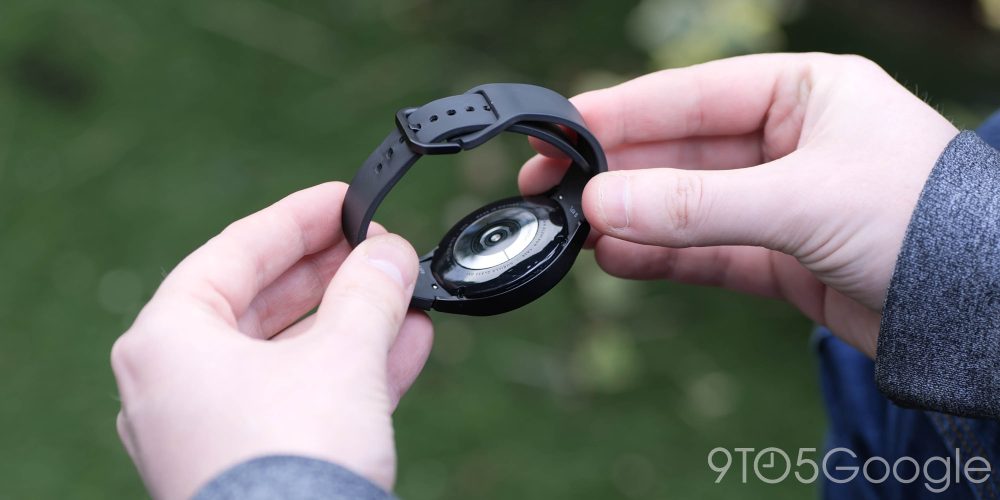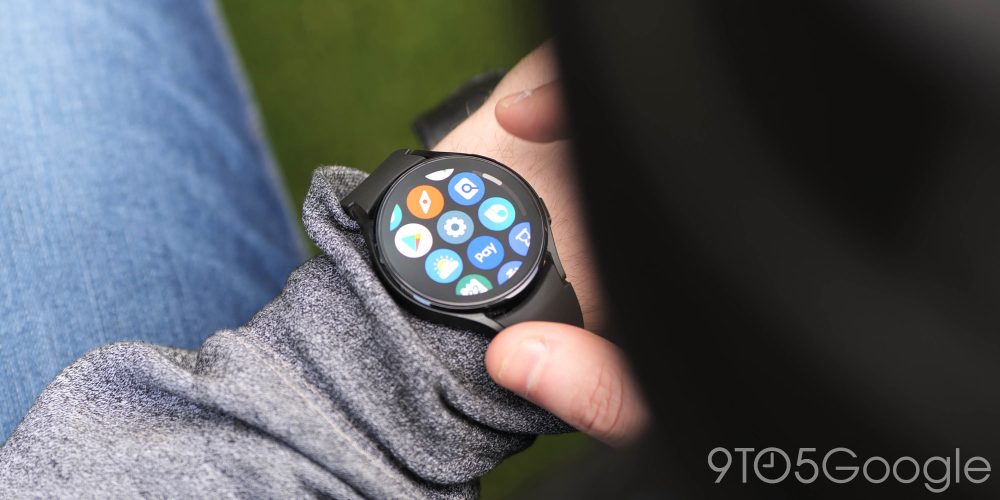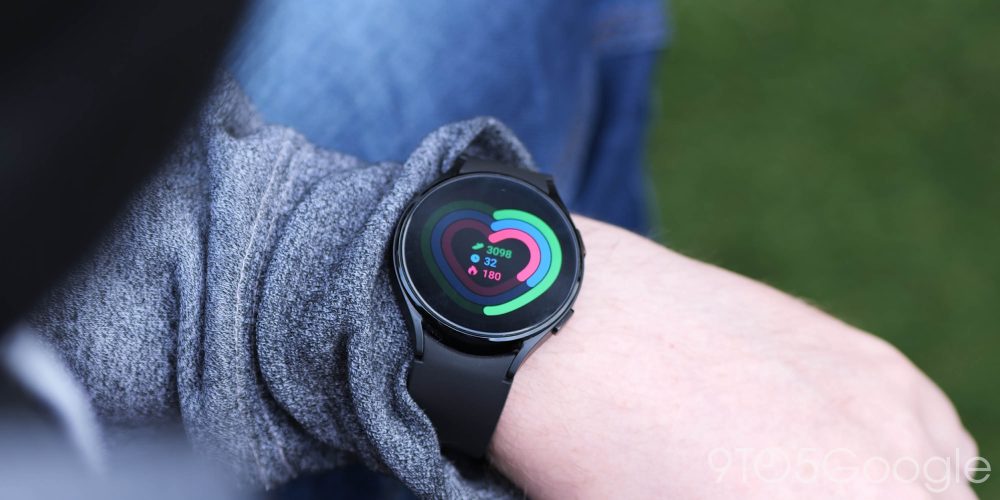
Smartwatches can be a very mixed bag, and Wear OS hasn’t quite hit the heights most of us would have hoped. We’ll likely see a resurgence over the coming years as Google and Samsung really invest in the platform. The first sign of that increased investment is the Galaxy Watch 4, which we’ve lived with for an extended period to better understand where it sits.
The biggest problem facing existing smartwatches is the upcoming Wear OS 3.0 update. Not all smartwatches released throughout 2021 will be eligible, nor will they be able to run the new software release due to chipset constraints. It’s a confusing time for Android wearables as a result of these limitations, as it means that for longevity purposes, your choices are very limited.
Samsung’s flagship wearable series is the only smartwatch running the latest and greatest version of Wear OS, so it stands apart – that’s before the Exynos W920 processor and enhanced 1.5GB RAM are factored in. Here are our thoughts after several months of daily wear.
Video – Galaxy Watch 4 long term review
Subscribe to 9to5Google on YouTube for more videos
Hardware & Design
Personally, I love smartwatches with a circular screen, and it’s the core reason that the Galaxy Watch 4 appealed to me from the get-go. The slim, flat chassis of the standard 44m Watch 4 model is easily the most appealing to me.
The only downside is that the edge bevel can be prone to dings, scrapes, and scuffs. Even the softened chassis edges can catch on pockets and zippers, which in turn, can flake the paint and damage the aluminum chassis.
For that reason, I picked up a Spigen Liquid Armor cover for the edges, so now my Watch 4 looks even more like the Classic version but without the added benefit of the rotating bezel. Adding this extra protection has changed the look and fit, but, of course, it’s entirely optional – though worth considering.


Samsung’s understated design choices also mean that the Galaxy Watch 4 is the perfect accessory to pair with almost all of your wardrobe attire. It feels so much leaner than the chunky, oversized Galaxy Watch 4 Classic. Personally, I’m inclined to say that this aesthetic blends into an outfit rather than standing out and demanding attention. The stealthy black model is at home just about anywhere, but the strap is one of the few major negatives introduced to the Watch 4 design.
To start, the strap is made from a rubberized texture. While that is fine for sporty use, it’s not great in every situation. With daily wear, I have noticed that the strap has started to crease and stretch where fastened. This could be a long-term weak point, but luckily you can replace straps, as the lugs are pretty standard.
I don’t like the fixed, blocked-off design that prevents the strap from opening fully. This makes the strap feel more like a bracelet with a fixed clasp. There’s also the annoying tuck design that is used to fully affix the Galaxy Watch 4 to your wrist. It nips as my skin and my wrist is squeezed, so I often find myself adjusting and moving the strap clasp down a notch for added comfort.


Those quirks and frustrations aside, the Galaxy Watch 4 is light and comfortable for all-day wear, no matter the setting. The 44mm model comes with a 1.4-inch display, and it’s genuinely superb. It’s bright, vibrant, and pin-sharp. At the side, the buttons are slim and have a nice satisfying combination of mushy clickiness without feeling cheap. Although I use these input buttons infrequently, I have felt them soften up over time and during prolonged usage.
Software & Performance


As the most powerful Wear OS smartwatch currently available, the Galaxy Watch 4 comes with some expectations. The first time I interacted with the screen I was shocked at just how smooth it was. It continues to be smooth and slick in a way that puts the likes of the TicWatch Pro 3 to shame.
It’s also the only smartwatch on the market running Wear OS 3.0. This Samsung-specific flavor fuses One UI atop an experience that Android fans will likely have become accustomed to. It took me a little while to get used to where things are and just how to access certain portions. It’s still a shame that you can’t fully reassign the side buttons to anything you want, as I’ve found myself using them less and less.
The Google Assistant is not yet available, so you’re not able to long-press the “Home” key and launch into anything other than the Power Menu or Bixby. The “Back” key can only be adjusted to go to the previous screen or open the Recents menu. This is like semi-customization, and while it’s better than nothing, I’ve found it more limiting the longer I’ve used the Galaxy Watch 4.
Samsung’s vision of Wear OS is a strange mix, but one that is fairly inoffensive. Sifting through Settings menus is made simple on a small screen thanks to the useful hyperlinks at the bottom of each screen. I’d love to see this implemented on more smartwatches, as it really does help navigation.
App performance is really solid, and, other than the slick UI, it’s one of the first things I notice when using another Wear OS watch and coming back to the Watch 4. That said, there are some minor hangs when loading or when the Watch 4 is updating apps in the background. This is especially noticeable should the battery start to dip towards the 20% level, where you can automatically set the battery saver mode to kick in.

One thing that still frustrates and annoys me is the relatively small Play Store library. Most bases are covered, but it’s a little worrying that a few apps have left Wear OS and may not return. However, this could change as a Samsung-led injection of new users should help increase the install base dramatically. As it stands, most Google apps here work just fine and look good to boot.
Because I have my Pixel 6 Pro set to complete silence, with no vibrations or ringtones enabled, I have found the subtle vibrations on my wrist to be quite refreshing – albeit somewhat distracting. If I’m using Google Maps directions while driving, the auto-launch and turn-by-turn vibration prompts have been especially welcome and take the stress out of solo navigating.
Attempting to pair the Galaxy Watch 4 with a non-Samsung phone is sometimes more difficult than it ought to be, though. You can’t just use the dedicated Wear OS app and sync things, as the Galaxy Wear app and an additional plugin are required to get things up and running. As I find myself regularly switching devices, this poses its own problems, as often the pairing procedure would fail and require a full restart.
Sometimes the Galaxy Watch 4 will confirm that the pairing procedure has been successful, but my phone is not connected, or the app is still showing account sync in process. I’ve seen this happen more often than I care to admit, and it overcomplicates what should be a fairly seamless task. This isn’t the only teething problem, as, without a Samsung phone, you can’t access a couple of key features, including taking ECG readings. It’s a big disappointment for anyone with an Android phone from another brand that you can’t use certain hardware features without having a Samsung-branded device.
Health & Fitness tracking

For most basic fitness and health tracking, I’ve found the Watch 4 to be sound. I can’t speak too much for the accuracy of workout tracking, but I have found automatic tracking to be quite a nice feature that kicks in intelligently and consistently.
To be completely honest, I don’t like to wear a watch while working out. I do, however, walk a lot. Now I don’t care too much for exact tracking data when I’m walking my dog on a leash, but it’s still nice to get an indication of just how much distance has been covered.
Sadly, GPS tracking isn’t perfect when you drill down into the data. It’s not a dealbreaker for me, but if you want ultra-precise tracking for your workouts, it might be better to look at something more dedicated. As an additional feature atop the other capabilities, it’s good for us “regular” folk.
This is a mass-market smartwatch, and although the metrics are not the most accurate, they are a solid way to keep track of base health statistics and should always be taken with a grain of salt. At a time when COVID-19 is a real health risk, the SpO2 sensor has been a useful way to check blood oxygen levels. A drop below 92% can be an indicator of the disease if no symptoms show. Samsung Health is also a great way to track all of your progress and get an overall picture of your health. The graphical UI and snapshot information are neat and easy to digest, but don’t expect too much and you’ll be fairly happy with the data produced.
Battery


In terms of lifespan, it’s true that the Galaxy Watch 4 is a two-day wearable for most people out there. But in my experience, I often find myself hitting the charger each morning to ensure I have 80% or more to see me through the day.
The charge time is slow but manageable, and getting notifications on your connected phone to indicate when your watch is at 100% is always nice. It’s just a shame that Qi wireless charging is such a finicky mess that I have only been able to get it working a couple of times. Weirdly, I’ve found it works best with reverse wireless charging
Sure, the magnetic charger that comes in the box works just fine, but it’s slow, and I prefer setting my watch down on a wireless charger overnight as I think this just suits the form factor a little better than a cable. However, I simply haven’t been able to get Qi charging working often enough to be viable with the Watch 4.
Final thoughts
At least until we see Google’s own Pixel Watch – which we hope will provide the Wear OS experience we all deserve – the Samsung Galaxy Watch 4 is probably the only smartwatch you should be looking at picking up if you want the full fat Wear OS 3.0 experience.
It’s a little disappointing that you can’t access a couple of key selling features without a Samsung smartphone. If you want the ECG option, then it’s an understandable reason to avoid this smartwatch completely unless you own a Galaxy phone. However, a saving grace here is the internal hardware is the same – save battery capacity – no matter which version you choose, meaning the day-to-day experience is identical across the entire lineup.
Sadly, there is no “perfect” smartwatch for Android owners. That said, the Samsung Galaxy Watch 4 is the closest to come to that for some time. And while it plays nicely with Android, it does a little better with a Samsung phone. Sure, it’s not a perfect product, but even with a few flaws, it’s hard not to argue that this is the best Wear OS watch released to date.
Where to buy the Galaxy Watch 4
The Samsung Galaxy Watch 4 retails for $249 while the Galaxy Watch 4 Classic is priced around $329. It’s important to note that you’ll pay an extra $30 for the larger sizes of each model, and all versions are available from most major retailers in their Bluetooth capacity, while LTE-capable versions models are available at major carriers:
More on Samsung:
- Samsung Galaxy A53 5G design breaks cover in regular listings w/ specs in tow
- [Update] Samsung adds Pro Mode support for Galaxy S21 Ultra telephoto camera via Expert RAW app
- Samsung teases February event for ‘Note-worthy’ Galaxy S22 w/ better low-light camera
FTC: We use income earning auto affiliate links. More.




Comments